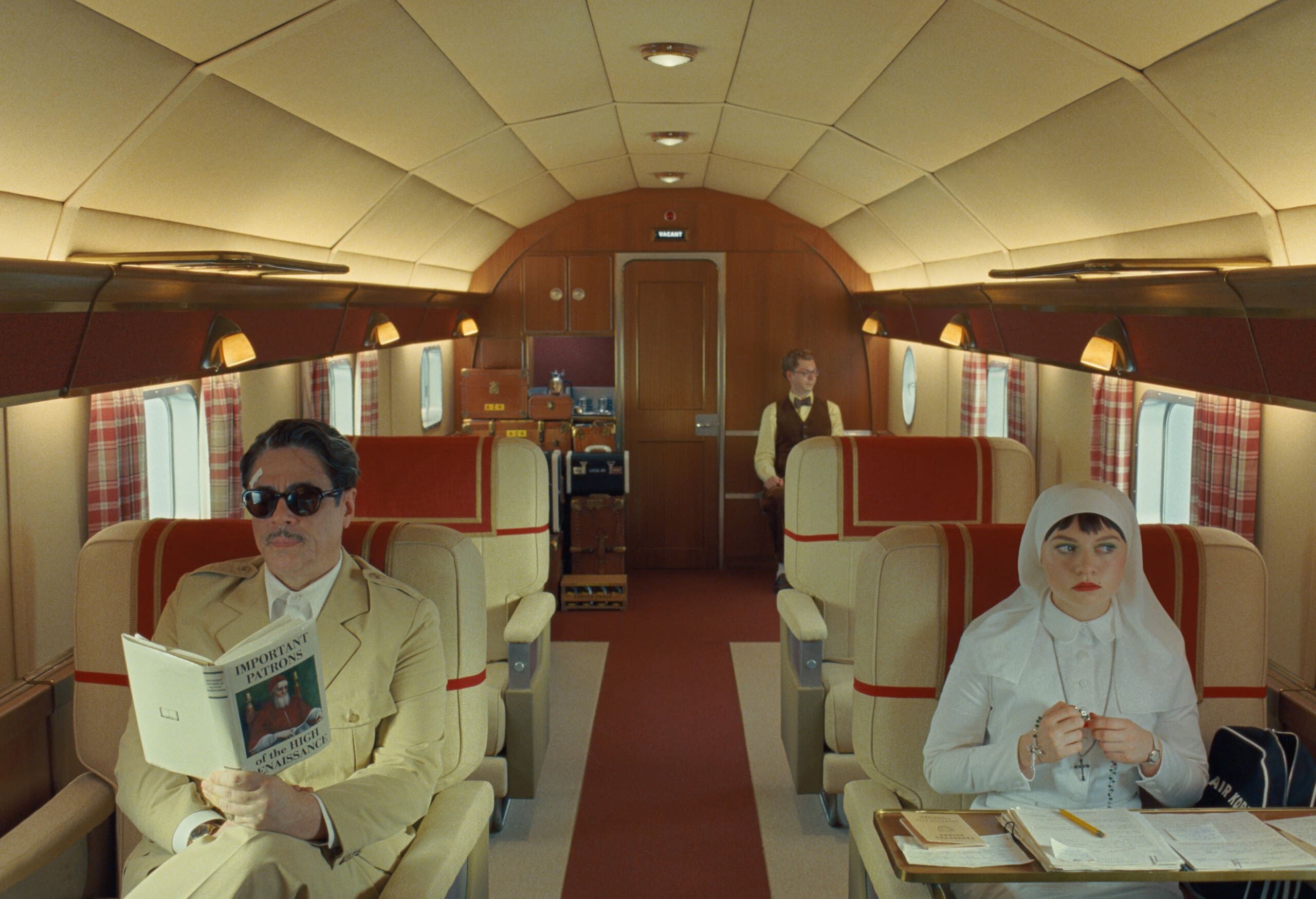
Wes Anderson is a filmmaker so stylized and specific that his name alone is nearly a genre in and of itself. As with any genre, many moviegoers will not consider his work their cup of tea, but for this writer, Wes Anderson films are an almost guaranteed classic. Anderson’s latest film, The Phoenician Scheme, is, for many viewers, a welcome detour from his most recent films, The French Dispatch (2021) and Asteroid City (2023), and instead harkens back to his films of the early aughts, such as The Royal Tenenbaums (2001).
The Phoenician Scheme boasts a strong ensemble cast led by Benicio Del Toro — playing Anatole “Zsa-Zsa” Korda, the world’s richest man — and features the nostalgically beautiful mise-en-scène that has become synonymous with Anderson’s films.
When Zsa-Zsa places his estranged daughter, Liesl (Mia Threapleton), in charge of his estate in the event of his inevitable death, the two embark on a journey that involves (a) avoiding assassination and (b) fixing the infrastructure of the fictional country of Phoenicia.
As they work to close “The Gap” on the titular Phoenician Scheme, father and daughter meet with Zsa-Zsa’s many business associates in hopes of securing funding. These partners include the fabulous duo of Bryan Cranston and Tom Hanks as brothers Leland and Reagan (who steal the show in their single scene), Jeffrey Wright as Marty, an overly-enthusiastic naval captain, and Scarlet Johansson as Cousin Hilda, Zsa-Zsa’s second cousin and potential future wife. It’s hard to choose a favorite amongst the star-studded cast, each character brings humor and depth, no matter how small the role. For these seasoned actors, these roles are more than just a cameo, and it’s clear they take their job seriously.
It’s been said by many other critics already, but I’ll say it again: Bjørn Lund is the role Michael Cera was born to play. After seeing his performance in The Phoenician Scheme, it’s hard to fathom why it’s taken Anderson so long to cast Cera. The two work well with each other, and Cera tackles his surprisingly layered role with an elegance and realness that a lesser actor may have failed to convey.
If the film has a flaw, it’s in Zsa-Zsa’s goals and the film’s subsequent main plot. The Phoenician Scheme involves tariffs, investors, and budgets — all things I personally try to forget about while at the movies, especially one as fun as The Phoenician Scheme. The characters’ main goals feel a bit too serious for the fun romp Anderson is attempting to create. But as with many of his films, Anderson is expertly creating a surrealist version of the issues facing humankind today (and for most of history). In a way, this is Anderson’s most realistic film yet. He doesn’t try to hide his message behind an anthropomorphized fox or an eccentric oceanographer, he focuses instead on “Mr. Five Percent,” a man who brags about using slave labor and famine for his own gain. Zsa-Zsa’s insatiable desire for success leads him to live a lonely, assassination-filled life as he distances himself from friends and family, viewing them instead as assets.
But in the end, Anderson manages to redeem his central character, not through a full repentance on Zsa-Zsa’s part, but through humanizing a character who has spent his whole life attempting to distance himself from the common man.
While The Phoenician Scheme likely won’t become a cult classic in the way of Moonrise Kingdom, it is still one of Anderson’s best films. If nothing else, it is his best use of casting and production design, possibly in his whole career.

